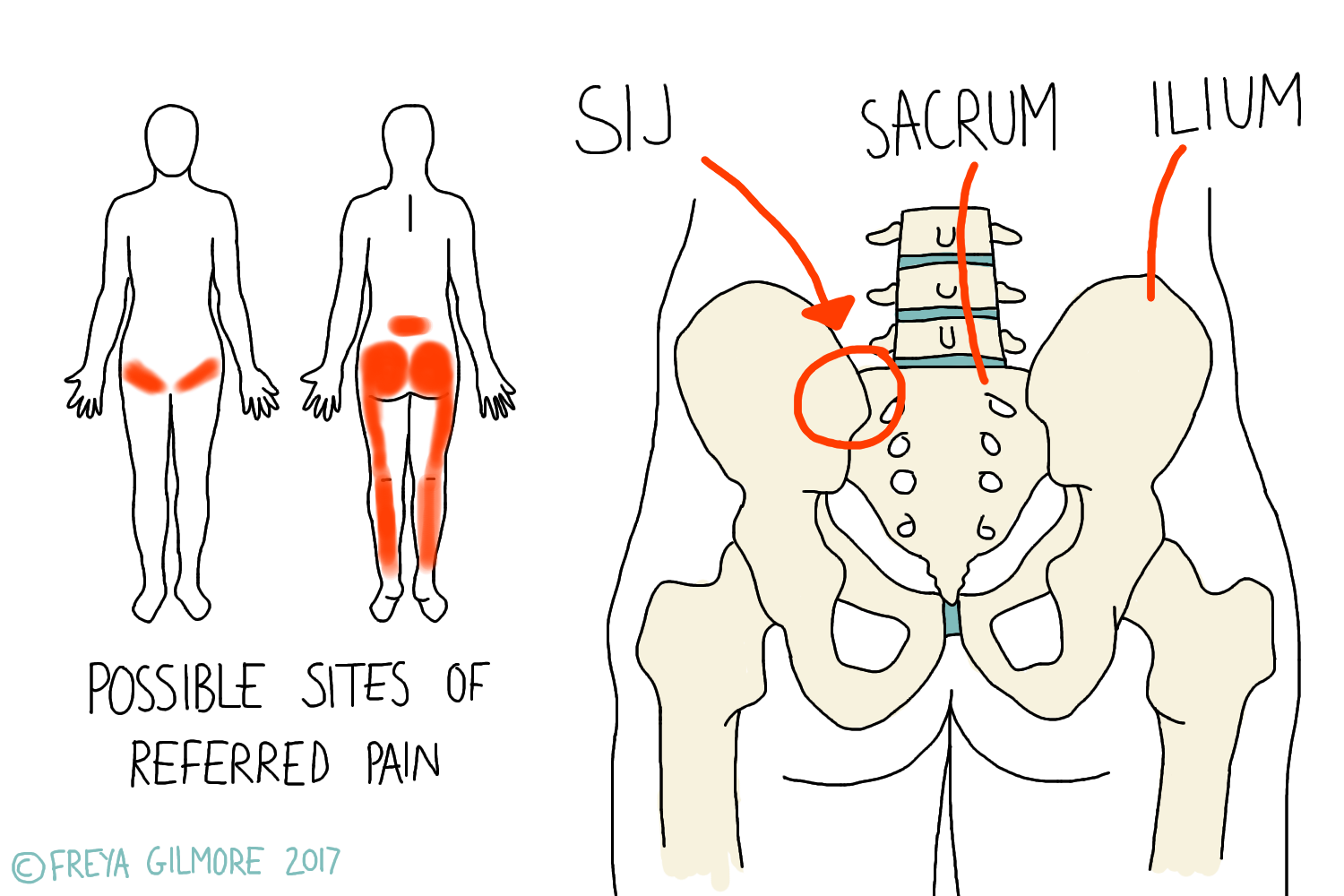Sacroiliac Joints (SIJs)
The Sacroiliac Joints (SIJs) are large, bumpy joints at the back of the pelvis. They join the pelvis to the spine, and there is one on either side. Some people have dimples nearby, and sometimes people incorrectly refer to them as "hips".
These joints are not like most: they are not hinges like the knee, nor ball and sockets like the shoulder. They are not made for mobility, although they do move more in pregnancy and childbirth. Most of the time, their role is more about shock absorption than movement.
There are a lot of structures in the lower back, and location of pain is not enough to determine the cause. SIJ pain can refer into the thighs and backs of the legs as shown in the diagram above. Although this pattern covers the same areas as sciatica, the nature of the pain is different. Sciatica is typically a shooting pain, whereas referred pain from the SIJ is more likely to be a dull ache. Your osteopath is qualified to differentiate between them.
Pregnancy and the SIJ
From early on in pregnancy, the body starts producing the hormone that relaxes ligaments. It is called "relaxin", and plays a role in pregnancy lower back pain from the first trimester. That same hormone is also responsible for water retention and subsequent carpal tunnel syndrome.
Unfortunately, the combination of more lax ligaments and changing posture are often not comfortable! The changes the body goes through in pregnancy are quick and significant, but that is not to say there is nothing that can be done about them. Back pain is one of the most common things we treat: the muscles, joints, and ligaments are the same as those in our other patients!
SPD and PGP
At the front of the pelvis is a third joint: the pubic symphysis. This behaves more like a joint between vertebrae: it has a large disc of cartilage in the middle. The anatomy makes it much more mobile than the SIJ. The three joints and their adjacent bones form a ring, so what happens at one joint will have an effect on the other two.
PGP stands for Pelvic Girdle Pain, and SPD is more specific: Symphysis Pubis Dysfunction. SPD comes under the umbrella of PGP, and both can result in significant pain and loss of mobility. Unresolved SPD in pregnancy can mean that birthing options are limited, and some positions are not recommended due to risk of further aggravating the condition. Early diagnosis and treatment are imperative to give yourself maximum freedom in birth.
The SIJ in Childbirth
As the baby descends through the birth canal, the pelvis responds with movement. The position you are in can affect the amount of movement available to the SIJs. Evidence suggests that birth without instrumental intervention is more likely in positions that allow the sacrum to move more. These positions include:
Squatting
All-fours
Kneeling
Standing
They are positions that potentially require more physical effort than the alternatives. If you look at labour as a marathon, you might want support in the strengthening exercises that will get you over the line. Your osteopath can help.
If you are concerned about lower back pain in pregnancy, you can book an appointment online here.

